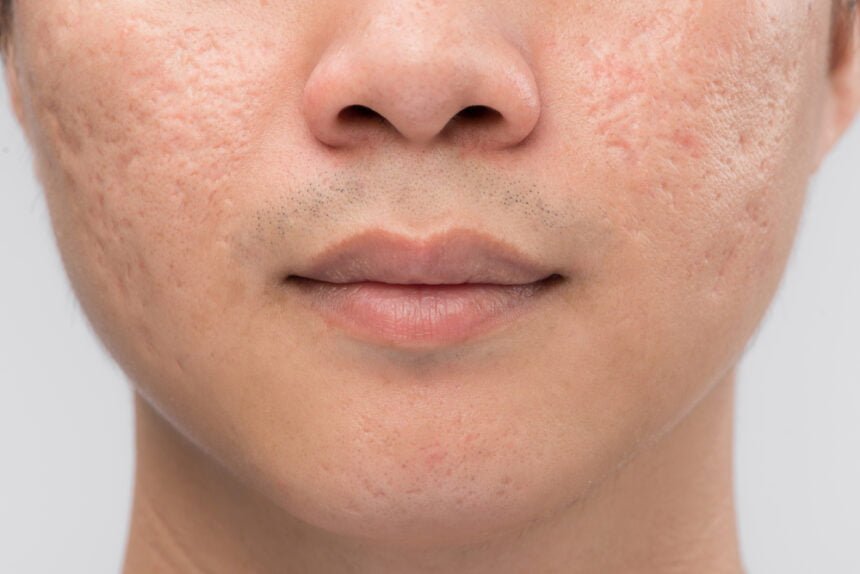Acne is a problem that affects many people of various ages. Many people believe that acne is a problem that only really affects teenagers. However, many adults are also prone to suffering from acne.
Women are especially prone to suffering from acne. Around 50% of women in their 20s and 33% of women in their 30s have acne issues. Left unchecked, it can lead to a lot of long-term issues, including scarring.
Acne Scars Are More Common Than You May Think
Acne can be an uncomfortable and irritating condition, and while it may be tempting to attempt to pop or pick at your spots, it is important to note that this can do more harm than good in terms of healing and scarring. This is one of the many acne myths that you need to be aware of. Acne can leave behind scars on the face and other areas, which can be an unwelcome reminder of some of the pain and difficulty associated with the condition.
Types of Acne Scars
Whether your pimple was infected determines the type of acne scars you’ll have on your face. Not every acne mark is the same, and if you want to get rid of acne scars, you first need to understand the several types of acne scars. You can read more on this article from the National Institute of Health.
1. Boxcar Scars
Boxcar scars are atrophic scarring that happens because your skin cannot return to its original condition after healing from certain acne forms. These scars may appear as oval or round depressions in the skin, ranging from red to dark brown to the same color as the surrounding skin. Moreover, these scars are typically associated with cystic acne, characterized by hard and painful cysts beneath the skin. When this type of acne heals, the skin may have difficulty replacing lost collagen, resulting in dents or depressions.
2. Ice Pick Scars
Ice pick scars are acne scarring that forms a pitted or sunken appearance. They appear to be seen as being punctured a hole in the skin with a sharp object such as an ice pick. These scars are typically less than two millimetres wide, narrow, and have deep indentations. Visually, ice-pick scars can create the appearance of small craters on the cheeks.
3. Rolling Scars
These types of scars are severe types of ice-pick scars, creating an uneven, wavy texture on the skin. They are not very deep and can become almost invisible when your skin is stretched. This type of acne scar is caused by long-term inflammatory acne and can become more pronounced with age and the visible signs of ageing.
What are the Types of Acne Scar Treatment
Following a skincare routine that explicitly targets acne marks is one way to eliminate acne scars. Apart from this, several acne treatments are recommended, some of which include:
1. Microneedling
Microneedling involves the insertion of minute needles in the skin surrounding a scar to promote collagen production. This collagen may help reduce the visibility of atrophic acne scars, resulting in a smoother complexion. A 2017 study published in the NCBI named “A Systematic Review of Treatments for Acne Scarring” mentioned micro needling as an effective treatment to improve 31 to 62% of atrophic acne marks. However, some people may experience pain, red, and inflamed skin which may subside over time.
2. Dermal Fillers
In the case of boxcar scars and rolling scars, some dermatologists may recommend filling soft tissues in the acne marks to treat them. Options for dermal fillers include:
- Silicon
- Collagen product
- Poly-L lactic acid
- Polymethylmethacrylate
- Polyacrylamide
- Hyaluronic acid
Also, the filling you choose determines the time period in which replacement might be needed. For instance, you may never need to replace polyacrylamide and silicon dermal fillers, but hyaluronic acid may need replacement after three months.
3. Laser Treatments
Laser treatment is an effective way to resurface the skin without using scrubs or chemicals. It extracts the outermost skin layer, revealing the skin cells underneath that are younger, diminishing the look of scarring. This can also help reduce the appearance and texture of raised scars and the colour of hyperpigmented scars.
However, it is important to note that laser treatment is not suitable for everyone. Depending on the type of acne scar and skin, it may cause a reaction, especially in individuals with sensitive skin. Therefore, it is essential to consult a professional before undergoing such treatment.
4. Injections
Corticosteroid and steroid injections may help flatten and soften the raised acne scar tissues of a person suffering from either keloid or hypertrophic scars.
5. Chemical Peels
Chemical peels, as suited for your skin type, are suggested to get rid of acne marks caused by severe acne. However, the study we mentioned above also stated that a particular trichloroacetic acid (TCA) peel received 70% improvement in almost 73.3% of the patients, while others who used glycolic acid saw an improvement of 25%.
6. Home Treatments
If you don’t want to undergo medical treatment to make the acne scarring disappear from your skin, some people try out home care remedies like:
- Honey
- Rosehip oil
- Aloe vera
- Black seed oil
But before you use these ingredients, note that they are not backed by science, and a few individuals have also noticed irritation post-usage. So, do a patch test and proceed with caution.
Bottom Line
Many people have had success with home remedies. In situations where the scarring is more stubborn, professional treatments carried out by a dermatologist can be beneficial. It is important to ensure that a qualified dermatologist is consulted when seeking help for acne scars, as misuse of treatments can lead to adverse effects.

